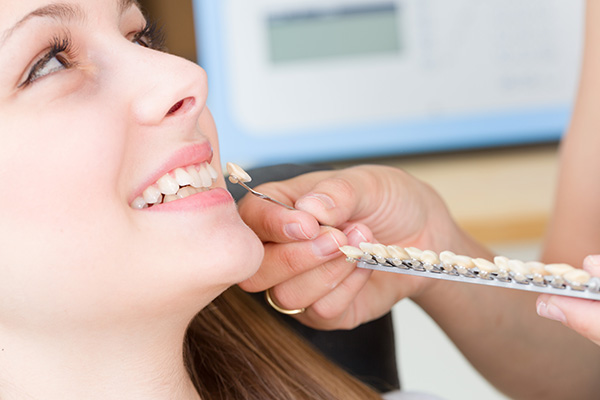 General dentistry helps to keep your mouth healthy with preventative treatments like teeth cleanings. It addresses issues that develop in your mouth. Regardless of how well a person takes care of their teeth, they might become damaged or discolored due to factors like trauma to the face or taking medication like tetracycline antibiotics.
General dentistry helps to keep your mouth healthy with preventative treatments like teeth cleanings. It addresses issues that develop in your mouth. Regardless of how well a person takes care of their teeth, they might become damaged or discolored due to factors like trauma to the face or taking medication like tetracycline antibiotics.
Veneers are one of the restorations used in general dentistry. These tooth-shaped shells are used to cover the front part of teeth, hiding any flaws on them. Veneers were invented to make the smiles of actors look better on screen, and it is one of the most effective ways to improve the way a person’s smile looks drastically. They only cover the front part of teeth, so they are typically recommended when the patient’s issues are isolated there.
How veneers are used in general dentistry
Veneers have multiple uses in general dentistry. Some of the issues a dentist might recommend veneers for include:
- Crooked teeth.
- Stained and discolored teeth.
- Deformed teeth.
- Spaces between teeth.
- Short teeth.
- Poorly shaped teeth.
- Chipped and broken teeth.
The process
Getting veneers placed on teeth usually requires multiple dental visits. The procedure requires making permanent alterations to the patient’s teeth by removing portions of enamel, so dentists typically give patients time to think about their decision.
The first part of the procedure involves injecting the patient with a local anesthetic and removing enamel from the front part of their teeth being treated. The removal of enamel makes space for restorations and prevents the treated tooth from looking abnormally bulky.
An impression of the teeth being treated is made by having the patient bite down on a mold or using digital images to create a 3D model. The impression or model is sent to technicians in a lab where dental restorations like veneers are made. The process takes about two weeks for the customized restoration to get back to the dentist. The patient gets temporary veneers to protect their teeth while they wait.
The patient comes back for a second appointment about two weeks after their first appointment. The temporary veneers are taken off, and the customized veneers are installed. Alterations are made as needed to ensure the veneers fit as they should. The patient’s smile should be wholly transformed at that point.
Patients who would rather not have their enamel altered should consider no-prep veneers. This is a particular type of veneer that does not require removing enamel from the patient’s teeth. These restorations are a lot thinner than conventional veneers, so they do not cover up stains and discoloration as well.
Benefits
The benefits of restoring teeth with veneers include:
- Dentists often tackle multiple issues with their installation, like stained and crooked teeth.
- Veneers can transform any smile into an amazing one.
- Porcelain veneers are less prone to staining than natural teeth.
- Veneers do not require special care.
Transform your smile
Dealing with a dental problem that affects the appearance of your teeth? Call or stop by our Poway clinic to explore options like veneers.
Request an appointment or call Oak Tree Dental at 858-377-5533 for an appointment in our Poway office.
Related Posts
There are common general dentistry treatments available at the dental office. General dentistry typically focuses on preventive and restorative treatments to ensure a patient’s optimal oral health. In most cases, if a person has a dental issue, one of these standard procedures will most likely be the solution.The following are common treatments available at the…
General dentistry can help you develop good oral health habits in many ways. Going to the dentist’s office will also reduce your risk of having cavities and gum disease. But visiting the dentist every six months is not enough to promote healthy, strong teeth and gums. Daily habits such as brushing your teeth are vital.…
General dentistry focuses on keeping your teeth and gums healthy. Teeth cleanings are one of the staples of general dentistry, and the American Association of Dentists recommends getting them at least two times per year. The procedure protects teeth against tooth decay and gum disease.Tooth decay and gum disease are the top two reasons people…
